Mystery of missing Birmingham glacial boulders
- Published
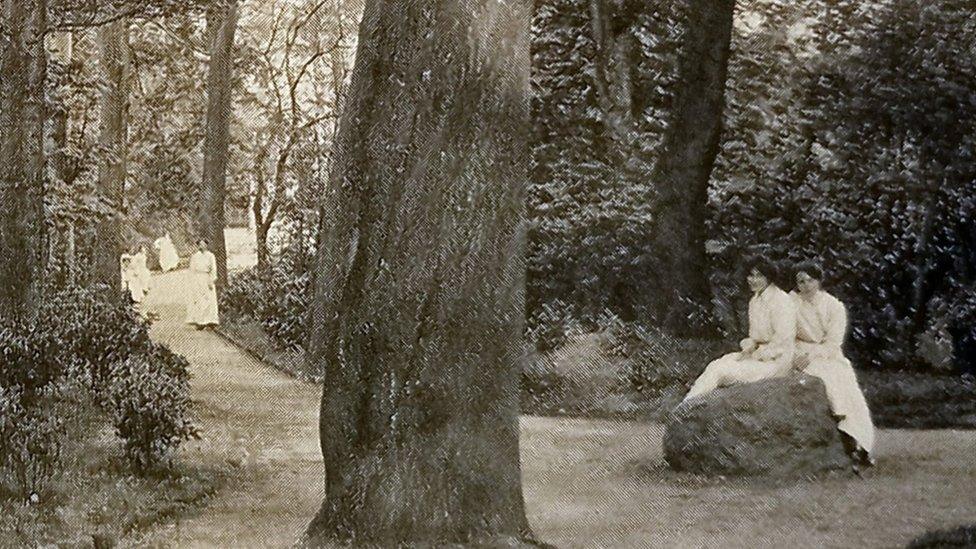
Two women sit on one of the boulders in the grounds of the Cadbury factory in 1911 - a sought-after photo opportunity from a pre-social media age
Help is being sought to track down missing, ancient boulders that once caused a public stir.
Known as erratic boulders, the giant rocks - visible across Birmingham parks - were once the subject of fervour about their origin.
People 100 years ago were so excited by the stones, they would travel for miles in their best clothes to have photos taken next to them.
But some rocks are no longer where an old survey recorded them as being.
Amid a revival of interest in the ice age relics, the hunt is on to find out what happened to the missing monoliths.
Beth Andrews, from the Birmingham Erratic Boulders Project, external, said: "They were very much part of the cutting edge of science in the late 1800s and early 1900s, so there was huge excitement around them.
"People initially thought they had come here in icebergs from the sea, but realised that couldn't be the case because some of them were found at the top of hills."
She added: "As scientists grew to understand they were in fact wonders of the ice age, these boulders became hugely popular. People would dress up in their smartest clothes and travel for hours to see the boulders and have their pictures taken next to them."

Two of the boulders in the present day, on Bournville Lane
The rocks had been deposited by glaciers about 450,000 years ago. In the process, they were transported from the mountainous Arenig region of Wales and left strewn across an area of the West Midlands stretching from Bromsgrove in Worcestershire to south west Birmingham.
Many of the boulders - some the size of a large family car - went on display in public spaces around the area.
A collection of them was hosted by Cotteridge Park, Birmingham, where a number can still be seen.
Elsewhere in the city, one gave its name to Northfield pub The Great Stone where it is still on display, with others dotted around Bournville and the grounds of the Cadbury factory.
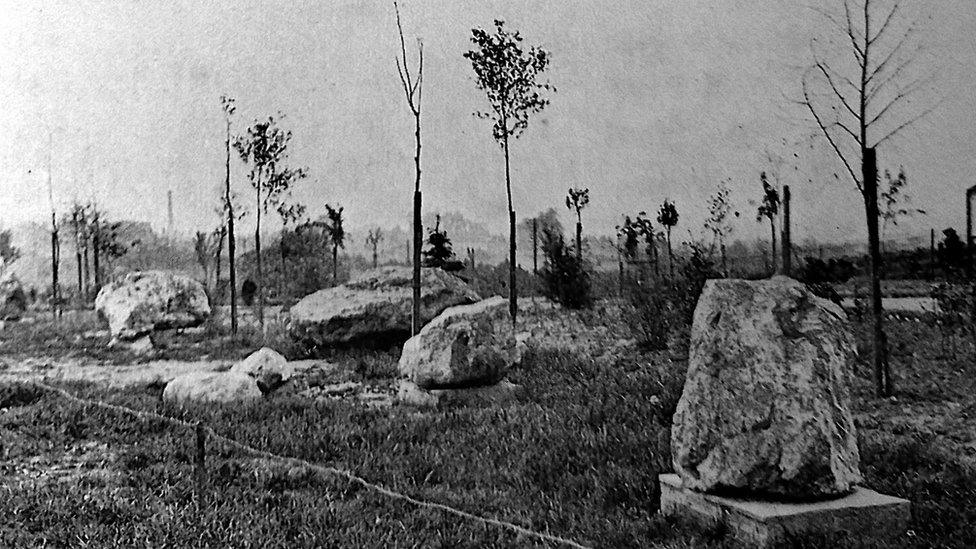
An array of the boulders in Cotteridge Park, 1912
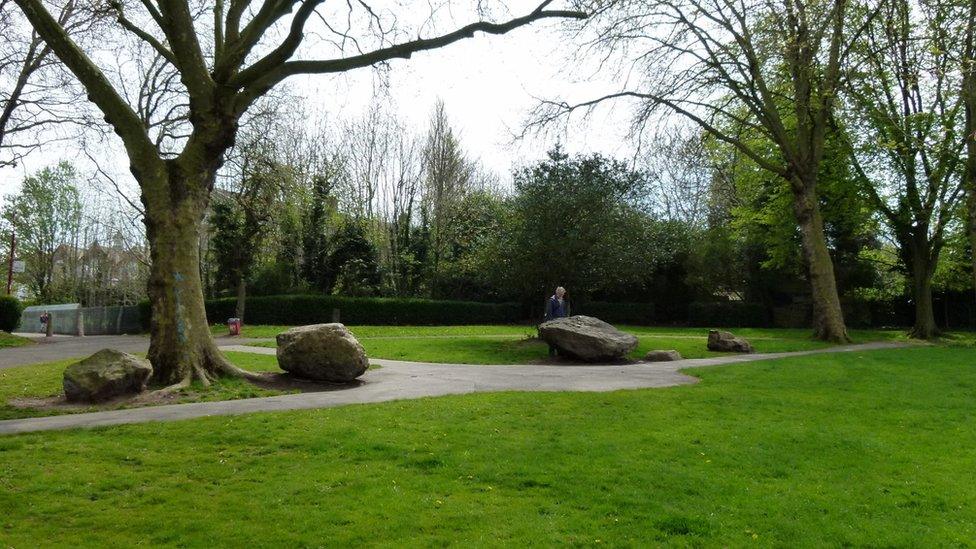
A number of boulders remain on display in Cotteridge Park
Another boulder was placed behind railings in Cannon Hill Park, Birmingham, where it is still located, albeit without the perimeter fence.
One of the giant stones became a tourist attraction in what is now Rowheath playing fields in Bournville.
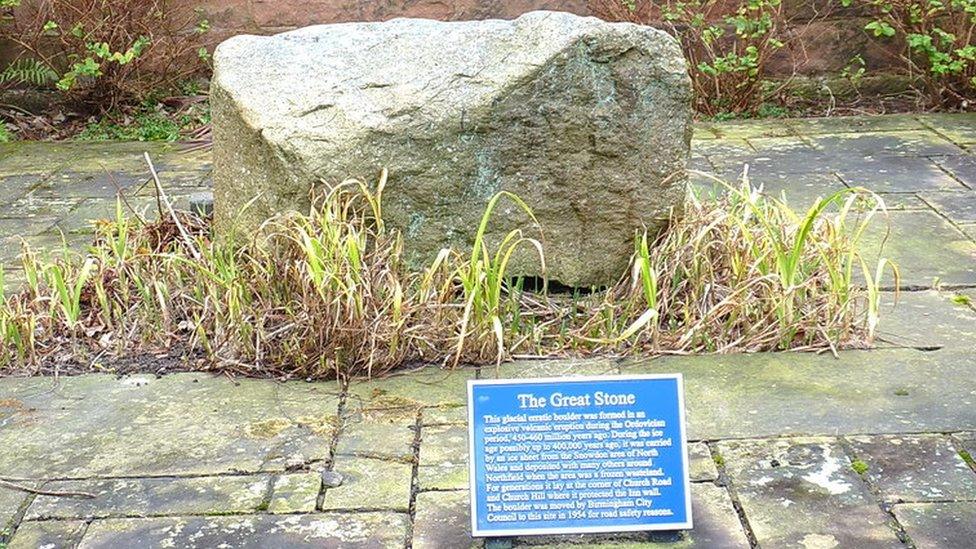
The Great Stone in Northfield

This woman in Cannon Hill Park in 1901 was among many at the turn of the last century to be pictured near such stones
As the frontiers of science shifted, however, the huge interest in the boulders waned - leaving them to become largely forgotten and ignored features, or in many cases lost altogether.
Of about 200 boulders that were mapped in 1890, more than half have vanished in the years since.
A rock in Rowheath, pictured in 1923 and measuring about 8ft by 5ft by 3ft, has become the focus of a specific appeal for information.
"So far, we know nothing more about the fate of this boulder beyond [1923]," project volunteer Julie Schroder said.
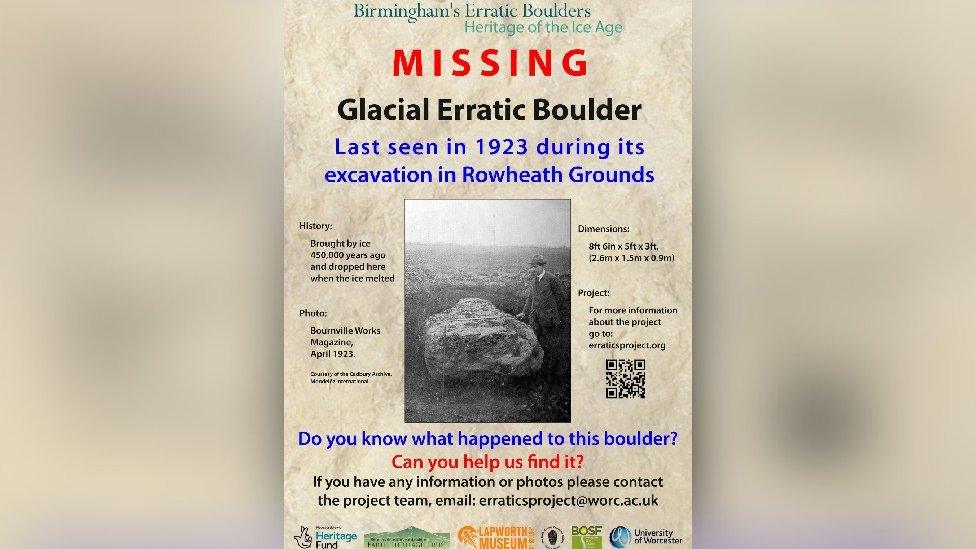
A poster in Rowheath Park appeals for help to solve a mystery
Ms Schroder added: "It may have been moved for display somewhere, or it may have been smashed up, or possibly covered and reburied.
"It would be very satisfying to learn the fate of the Rowheath boulder or better still, find it, before the centenary of its discovery in April 1923."
Those involved in the project, which is funded by the National Lottery Heritage Fund (NLHF), hope local people may be able to provide information.
"There may well be people who can fill in the gaps and we'd love to hear from them," Ms Andrews said.
"The NLHF funding means we can rekindle public awareness and interest in this ancient and neglected heritage."
The boulders and their story is the subject of a free exhibition at the University of Birmingham's Lapworth Museum of Geology.

Follow BBC West Midlands on Facebook, external, Twitter, external and Instagram, external. Send your story ideas to: newsonline.westmidlands@bbc.co.uk, external